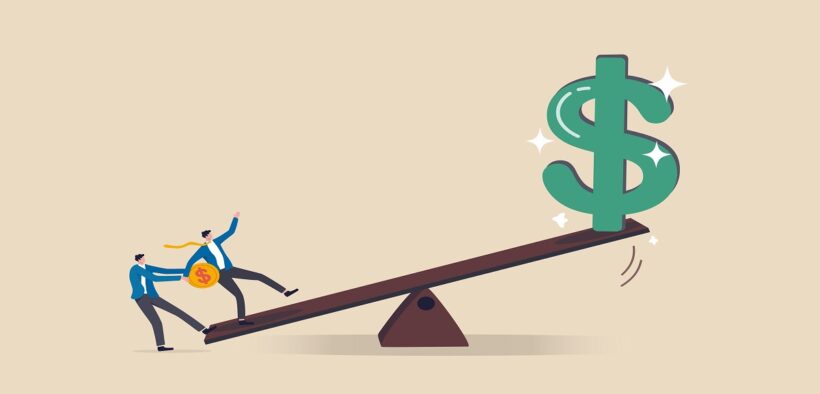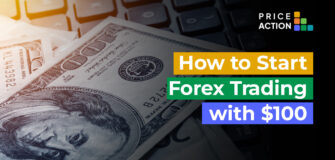What is Leverage in Forex Trading?
Share

The idea of leverage can be used by investors and firms. Investors use leverage to considerably boost the returns that may be provided with an investment. They lever their investments by utilizing various instruments which include options, futures, and margin accounts. Companies may use leverage to invest in their assets. Quite simply, rather than issuing stock to boost capital, companies may use debt financing to purchase business operations so that they can increase shareholder value.
If you’re a rookie trader, you might find yourself asking them questions for example ‘what is leverage in Foreign exchange trading?’ and ‘how will it be helpful?’ This short article provides you with solutions to these kinds of questions, along with, an in-depth summary of Foreign exchange leveraging.
What is Leverage?
Generally, leverage allows you to influence your atmosphere in a manner that multiplies the result of the efforts without growing your sources
In the realm of trading, this means you have access to a bigger area of the market having a smaller-sized deposit than you could via traditional investing. This provides you the benefit of getting greater returns for any small up-front investment, though you should observe that traders could be vulnerable to greater losses when utilizing leverage.
What Is Leverage In Forex Trading?
Leverage in foreign exchange is really a helpful financial tool that enables traders to improve their market exposure past energy production (deposit). What this means is an investor can enter a situation for $10,000 price of currency and just need $1000, inside a ten-to-one leverage scenario. However, it is important to realize that gains AND losses are magnified by using leverage. In adverse market scenarios, an investor using leverage could even shed more pounds of money compared to what they have as a deposit.
Leverage of ten-to-one implies that traders can gain contact with a notional value or trade size, ten occasions greater than the deposit/margin that’s needed to finance the trade. This is often considered similar to placing a 10% deposit lower on the house you get access to the whole house while only funding 10%from the full value.
How Does Forex Leverage Work?
Let us say an investor has 1,000 USD on their own buying and selling account. A normal large amount of ‘1’ on Mt4 is equivalent to 100,000 currency units. As you’ll be able to trade small as well as micro lots with Admiral Markets, a first deposit this size allows an investor to spread out micro-lots (.01 of merely one lot or 1,000 currency units) without any leverage set up. However, like a trader would usually be searching for approximately 2% return per trade, it might simply be comparable to 20 USD
For this reason, many traders choose to employ gearing, also referred to as financial leverage, within their buying and selling – so the size of the buying and selling position and profits might be greater. Let us assume an investor with 1,000 USD on their own balance wants to trade big as well as their broker is offering leverage of just one:500. By doing this an investor can open a situation that’s the size of 5 lots when it’s denominated in USD. Quite simply, 1,000 USD * 500 (the leverage), would equal an optimum size of 500,000 USD for that position. The trader can really request their orders on 500 occasions, depending on how big his deposit is to be filled.
By doing this, if 1:500 leverage can be used, an investor could be making 500 USD rather than just one USD. It’s obviously vital that you condition that the trader can lose the funds as rapidly as you’ll be able to gain them. Now once we have understood the meaning along with a practical illustration of leverage, let us have a more in-depth take look at its application, and discover what the perfect degree of gearing in Forex trading is. Admiral Markets offers different leverages that are determined by client status via Admiral Markets Pro terms.
For retail clients, leverages as high as 1:30 for currency pairs and 1:20 for indices can be found. For professional clients, optimum leverage as high as 1:500 can be obtained for currency pairs, indices, powers and gold, and silver. Both retail and professional status include their own benefits and trade-offs, so it’s wise to research them fully before trading. Discover today if you are qualified for professional terms so that you can improve your trading potential and the leverage in which you would like it to be!
How Can Leverage Backfire?
Although the opportunity to earn significant profits by utilizing leverage is substantial, leverage may also prevent investors. For instance, when the currency underlying your trades moves within the other direction of the items you trust, leverage will greatly amplify the possible losses. To prevent a catastrophe, foreign exchange traders usually implement a rigid trading style which includes using stop orders and limit orders made to control potential losses
How to Manage Forex Leverage Risk?
Leverage can be defined as a 2-edged sword, supplying both good and bad outcomes for foreign exchange traders. For this reason, it is important to determine the right effective leverage and incorporate risk management. Top traders utilize stops to limit their downside risk when trading foreign exchange. We advise risking a maximum of 1% from the account equity on any single trade and a maximum of 5% from the account equity for those open trades at any time over time
In addition, effective traders utilize a positive risk-to-reward ratio so that they can achieve greater probability trades with time. It is essential to prevent mistakes with leverage to learn how to avoid other conditions traders might face by checking our Top Trading Training guide.

When operating in the global currency markets, selecting the right forex leverage level depends on a trader’s experience, risk tolerance, and comfort. New traders should familiarize themselves with the terminology and remain conservative as they learn how to trade and build experience. Using trailing stops, keeping positions small, and limiting the amount of capital for each position is a good start to learning the proper way to manage leverage.











